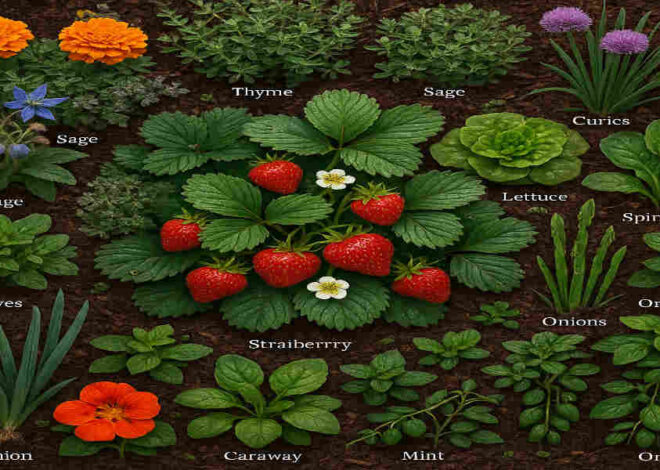
How to Grow Christmas Ferns: Simple Evergreen Care at Home
Welcome to the enchanting world of the Christmas Fern, a lush evergreen that promises beauty and vibrancy in your garden all year round. Known for its hardiness and unique winter appeal, the Christmas Fern, or Polystichum acrostichoides, is more than just a plant; it’s a staple in wild and cultivated landscapes.
Whether you’re a seasoned gardener or a curious beginner, this article will equip you with all you need to grow and maintain these beautiful ferns effectively.
What is the Christmas Fern?

Botanical Background
The Christmas Fern, scientifically known as Polystichum acrostichoides, thrives naturally in the forests of Eastern North America and is adaptable across USDA zones 3–9. This fern is celebrated for its lush, green fronds, which remain vibrant through winter, earning it the festive name.
Distinctive Features
Typically growing up to 3 feet tall, the Christmas Fern features two types of fronds: sterile and fertile. The fertile fronds release spores, replicating the fern naturally and adding a delicate texture to its appearance. This evergreen’s resilience and year-round color make it a favorite among gardeners.
Why Choose Christmas Fern for Your Garden?
Evergreen Foliage: The fern’s ability to retain its lush greenery even during the cold winter provides a continuous splash of color when most other plants have died back.
Low Maintenance: This fern requires relatively minimal care compared to other shade plants, making it ideal for novice and experienced gardeners.
Soil and Wildlife Benefits: It helps in soil health improvement and erosion control and provides shelter for various small animals and pollinators, enhancing the ecological balance of your garden.
Ideal Growing Conditions for Christmas Fern
Light Requirements
The Christmas Fern prospers in partial to full shade. While it can tolerate some sunlight, dappled light is ideal to prevent scorch from intense sun exposure and maintain its fronds’ vibrant green.
Soil Preferences
A moist, well-draining soil rich in organic matter suits the Christmas Fern best. Testing and amending your garden soil will ensure the fern has the perfect environment to thrive.
Temperature and Hardiness
This fern is remarkably hardy in USDA zones 3–9 and can withstand cold and moderately hot temperatures. In extreme weather, protective measures like mulching can help safeguard the ferns.
Planting Christmas Fern: Step-by-Step Guide
When and Where to Plant
The best times to plant the Christmas Fern are after the last frost in spring or during the early fall. Selecting a site with adequate shade and the right soil conditions is crucial for the fern’s success.
Planting Process
Plant the ferns about 18 inches apart to allow ample room for growth. Ensure that the planting depth sufficiently stabilizes the plant and encourages robust root development. Mulching with organic materials like pine needles or shredded bark will help retain soil moisture and temperature.
Year-Round Christmas Fern Care Tips
Watering and Fertilizing
Regular watering is essential, especially in dry conditions, though avoiding waterlogging is important. Fertilizing should be done sparingly, ideally with organic options for acid-loving plants.
Pruning and Maintenance
Maintenance is generally low; remove any brown or damaged fronds to keep the plant healthy and aesthetically pleasing. No major pruning is needed.
Mulching and Winter Protection
Applying a layer of mulch helps in moisture retention and provides insulation during colder months. Using natural leaf litter can be an effective and eco-friendly mulching option.
Christmas Fern Indoors: Tips for Houseplant Success
Growing the Christmas Fern indoors can add a touch of nature’s serenity to your living space. Use a potting mix designed for ferns and place the plant in an east-facing window where it will receive indirect sunlight. Regular misting will help maintain the necessary humidity levels to keep the fern thriving indoors.
Common Problems and Solutions
Crown Rot and Pests
Overwatering can lead to crown rot, so managing soil moisture is essential. Pests like slugs and snails can be deterred using organic methods such as barriers and hand-picking.
Environmental Stress
If you notice browning tips or stunted growth, adjusting the fern’s light exposure, watering schedule, or soil conditions may be necessary to alleviate stress.
Propagating Christmas Fern
Propagation can be done by dividing mature plants or through spore propagation, an exciting method for those interested in the biological aspects of gardening. Detailed steps for each technique can guide enthusiasts through the process.
Landscape Design Ideas with Christmas Fern
Using the Christmas Fern as a ground cover or as an accent in border plantings can enhance your garden’s visual appeal. Combine it with other shade-loving plants like hostas and astilbe for a beautiful, textured garden design that provides interest throughout the year.
Conclusion
The Christmas Fern is a versatile and beautiful addition to any garden, offering year-round interest and requiring minimal care. We encourage you to try growing Christmas Ferns in your garden or indoors and experience the lush, evergreen beauty it brings. Share your experiences or any questions in the comments—we love hearing from fellow plant enthusiasts!
You may also read (lettuce shortage 2025 causes impact and how to adapt)


